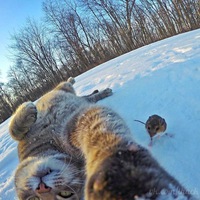
C4H10->C2H4->C2H6,->C2H5CL->C4H10->C4H9CL->C6H14->CO2
 0
0
 0
0
Ответы на вопрос
 Внимание! Ответы на вопросы дают живые люди. Они могут содержать ошибочную информацию, заблуждения, а также ответы могут быть сгенерированы нейросетями. Будьте внимательны. Если вы уверены, что ответ неверный, нажмите кнопку "Пожаловаться" под ответом.
Внимание! Ответы на вопросы дают живые люди. Они могут содержать ошибочную информацию, заблуждения, а также ответы могут быть сгенерированы нейросетями. Будьте внимательны. Если вы уверены, что ответ неверный, нажмите кнопку "Пожаловаться" под ответом.

Попробуем..
1.С2H6+CL2-->C2H5CL+HCL .
2C2H5CL+2Na-->C4H10+2NaCL .
3.C4H10+CL2-->C4H9CL+HCL .
4.C4H9CL+NaOH-->C4H9OH+NaCL .
5.2C4H9OH+13O2-->8CO2+10H2O .
Удачи!
 0
0
 0
0

The series of chemical reactions you've mentioned appears to involve the transformation of various hydrocarbons and chlorinated compounds. Let's break down each step in the sequence:
C4H10 (Butane) -> C2H4 (Ethylene)
- In this step, butane (C4H10) undergoes a process called cracking, which typically involves high temperatures and/or a catalyst. It breaks down into ethylene (C2H4).
C2H4 (Ethylene) -> C2H6 (Ethane)
- Ethylene (C2H4) is hydrogenated to form ethane (C2H6).
C2H6 (Ethane) -> C2H5Cl (Chloroethane)
- Ethane (C2H6) can react with hydrogen chloride (HCl) to form chloroethane (C2H5Cl).
C2H5Cl (Chloroethane) -> C4H10 (Butane)
- Chloroethane (C2H5Cl) can undergo a substitution reaction, where the chlorine atom is replaced by a hydrogen atom, resulting in the formation of butane (C4H10).
C4H10 (Butane) -> C4H9Cl (Chlorobutane)
- Butane (C4H10) can also undergo a substitution reaction, similar to step 4, to form chlorobutane (C4H9Cl).
C4H9Cl (Chlorobutane) -> C6H14 (Hexane)
- Chlorobutane (C4H9Cl) can react with a nucleophile (e.g., sodium iodide) to undergo a substitution reaction, forming hexane (C6H14).
C6H14 (Hexane) -> CO2 (Carbon Dioxide)
- Hexane (C6H14) can undergo combustion, typically with oxygen, to produce carbon dioxide (CO2) and water (H2O) as products.
These reactions represent a series of chemical transformations involving the conversion of different hydrocarbons and chlorinated compounds. Each step involves specific chemical reactions and conditions.
 0
0
 0
0
Похожие вопросы

Топ вопросов за вчера в категории Химия
Последние заданные вопросы в категории Химия
-
Математика
-
Литература
-
Алгебра
-
Русский язык
-
Геометрия
-
Английский язык
-
Химия
-
Физика
-
Биология
-
Другие предметы
-
История
-
Обществознание
-
Окружающий мир
-
География
-
Українська мова
-
Информатика
-
Українська література
-
Қазақ тiлi
-
Экономика
-
Музыка
-
Право
-
Беларуская мова
-
Французский язык
-
Немецкий язык
-
МХК
-
ОБЖ
-
Психология
-
Физкультура и спорт
-
Астрономия
-
Кыргыз тили
-
Оʻzbek tili




















